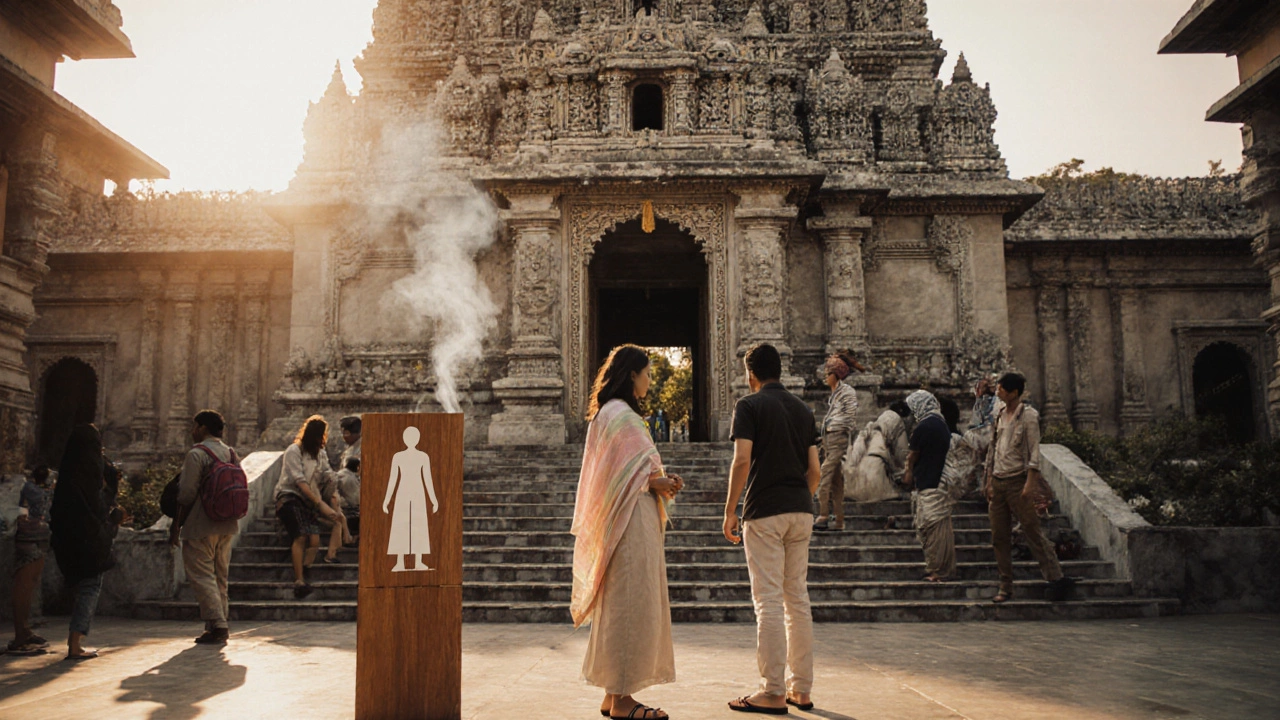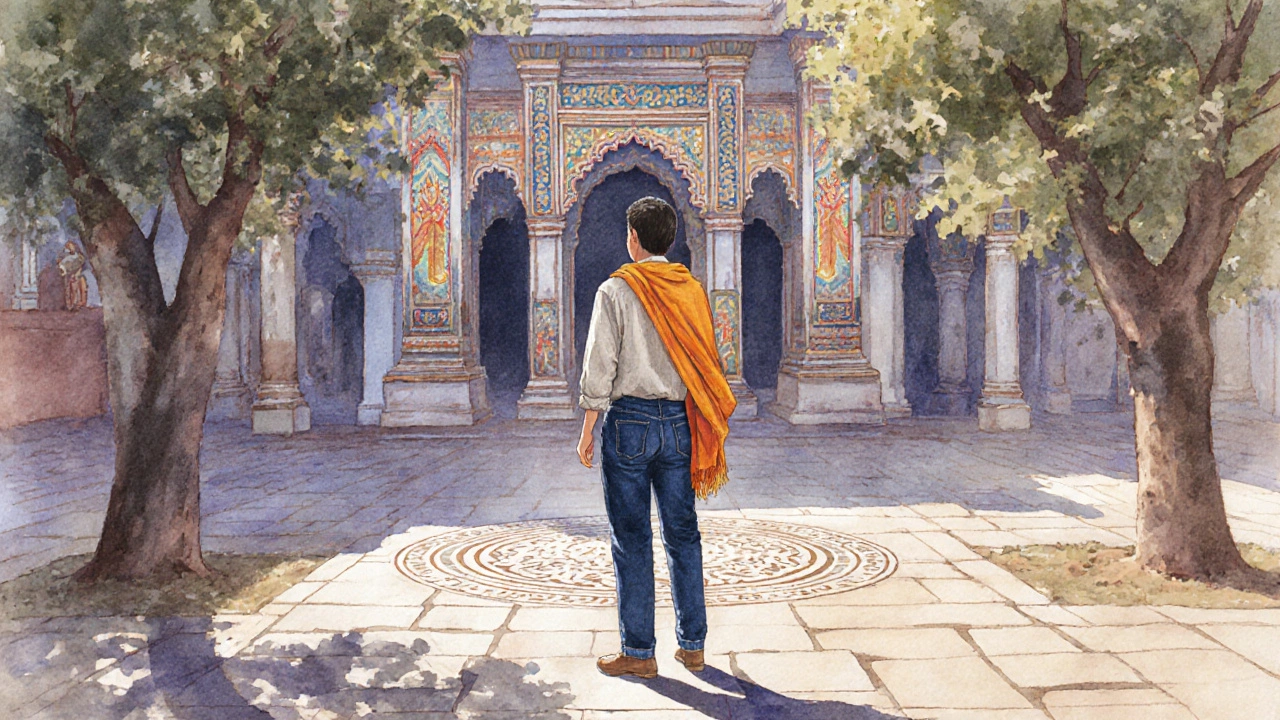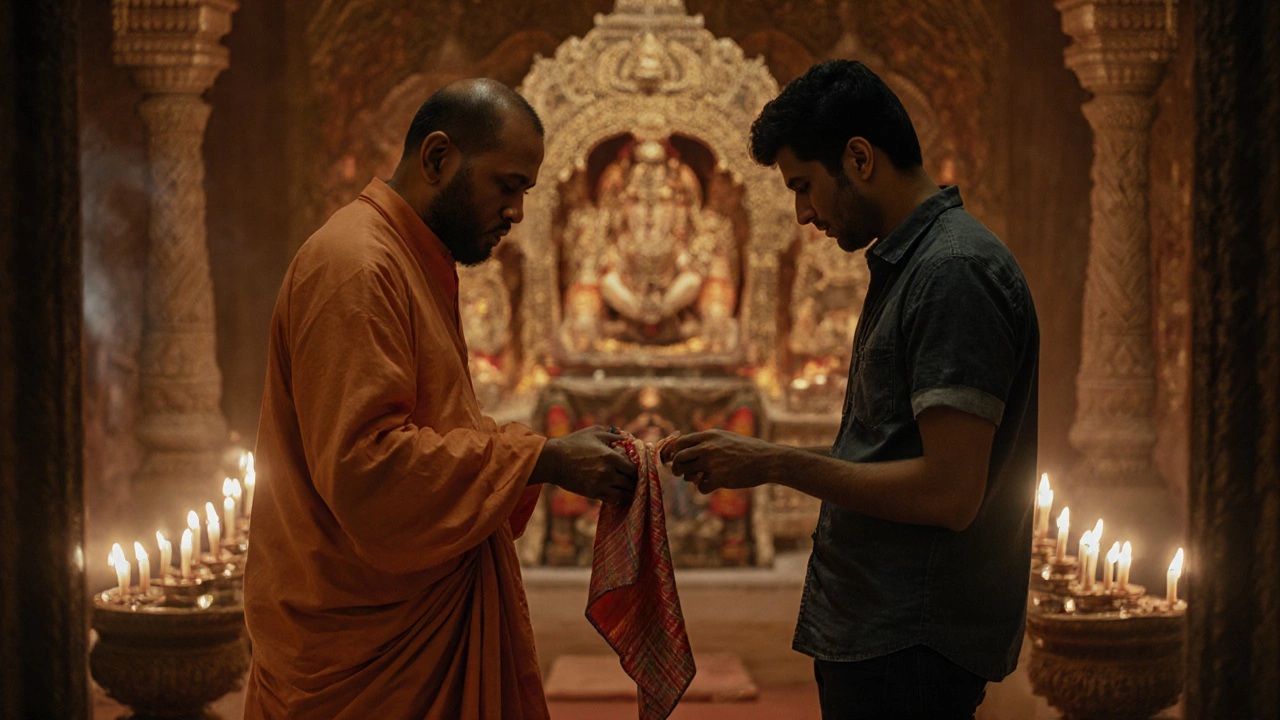Can I Wear Jeans to a Hindu Temple? Dress Rules Explained

- Oct, 15 2025
- 0 Comments
- Aaron Blackwood
Temple Dress Code Checker
Is Your Outfit Temple-Appropriate?
Regional Guidelines
Recommendations
Visiting a Hindu temple is a chance to see vibrant rituals, intricate carvings, and a slice of Indian spirituality. But the moment you step through the gate, you’ll notice a quiet expectation about how you look. The question on many travelers’ minds is simple yet tricky: jeans Hindu temple - is it okay? This guide walks you through why clothing matters, what counts as respectful, and how to stay comfortable without risking a disapproving glance.
Key Takeaways
- Most Hindu temples ask visitors to cover shoulders and knees; jeans are often considered too casual or revealing.
- Traditional alternatives like a simple cotton sari for women or a dhoti for men are appreciated but not mandatory.
- Light, breathable fabrics and modest cuts keep you cool while respecting the sacred space.
- Regional variations exist - South Indian temples may be stricter about footwear, while some North Indian shrines relax the dress code for tourists.
- Carry a small shawl or wrap; it solves most dress problems on the spot.
Why Dress Codes Exist in Hindu Temples
In Hindu tradition, the temple is a place where the divine dwells among humans. The architecture, incense, and chants all aim to create an atmosphere of purity. Dressing modestly signals reverence and helps maintain that ambience. Historically, priests and devotees wore simple cotton or silk garments that covered the body, allowing the mind to focus on worship rather than appearance.
Modern visitors often wear Western outfits, which can clash with the quiet sanctity. Tight or ripped denim can draw attention, while short shorts reveal more than the space intends. Understanding the cultural logic behind the dress code makes it easier to comply without feeling embarrassed.
Jeans: The Good, Bad, and Ugly
Denim is beloved for its durability, but its reputation in temples is mixed. Here’s the breakdown:
- Fit matters: Loose‑fit or straight‑leg jeans that reach the ankle are less likely to offend than skinny, cuffed styles.
- Condition matters: Clean, un‑distressed denim without holes or fading shows respect.
- Color matters: Darker shades (indigo, black) blend better with the subdued temple palette than bright or neon hues.
Even when a temple appears relaxed, staff may ask you to cover your knees or shoulders. If you’re unsure, it’s safer to treat jeans as “potentially inappropriate” and have a backup plan.

What’s Considered Appropriate Attire
Below are the most common clothing choices that align with temple etiquette across India:
- Sari - A lightweight cotton or silk wrap for women that covers the shoulders and knee‑length.
- Kurta with loose pants - A long shirt style paired with pajama‑like trousers.
- Simple dhoti or lungi for men - Traditional draped garments that stay below the knee.
- Long cotton or linen shirts for both genders - Anything that reaches the hips and covers the arms.
- Shawls, scarves, or wraps - Handy for covering shoulders when the original outfit is short‑sleeved.
Footwear also matters. Many temples require you to remove shoes before entering the inner sanctum. Flip‑flops, sandals, or barefoot walking is acceptable; closed shoes with thick soles are often discouraged because they can damage the marble floor.
Regional Dress Nuances
India’s vast cultural landscape means not every temple follows the same rulebook. Here’s a quick snapshot:
| Region | Typical Requirement | Common Exceptions for Tourists |
|---|---|---|
| North India (e.g., Varanasi, Delhi) | Knees and shoulders covered; shoes removed | Neat, dark jeans accepted if covered with a shawl |
| South India (e.g., Madurai, Mysore) | Strict shoe removal; head coverings optional | Traditional silk saris or cotton kurta‑sets preferred |
| West India (e.g., Gujarat, Pune) | Modest clothing; no shorts or sleeveless tops | Plain cotton dresses or skirts acceptable |
| East India (e.g., Kolkata, Bhubaneswar) | Covering shoulders mandatory; sometimes a scarf is required | Lightweight linen shirts work well |
Notice how the south tends to be stricter about footwear, while the north is more forgiving of clean denim when paired with a respectful shawl.
Practical Tips for Travelers
- Pack a lightweight shawl or pashmina. It’s the easiest way to cover shoulders instantly.
- Choose breathable fabrics like cotton, linen, or rayon - they keep you cool in hot temple courtyards.
- Carry a pair of flip‑flops in a small bag. You’ll need them for the shoe‑off area.
- If you’re bringing jeans, opt for straight‑leg, dark denim without rips and wear a long shirt on top.
- Check the temple’s official website or ask your guide ahead of time. Many famous shrines list dress expectations online.
When you arrive, look for signage or a notice board near the entrance. Most temples display a simple illustration: a person with covered shoulders and knees. Follow it, and you’ll blend in seamlessly.

What to Do If You’re Already in Jeans
It happens - you’ve walked in, and the priest points out your shorts. Here’s a calm, respectful way to handle it:
- Apologize politely: “I’m sorry, I didn’t realize.”
- Ask if a shawl or a borrowed piece of clothing is available. Many temples keep a small stock for visitors.
- If no wrap is on hand, step outside, adjust your outfit (e.g., pull the hem up), and re‑enter.
- Remember that a sincere attitude often smooths over minor dress slips.
In most cases, staff appreciate the effort to correct the mistake rather than outright refusal.
Checklist: Temple Dress Essentials
- Clean, modest clothing covering knees and shoulders
- Light shawl or scarf
- Flip‑flops or sandals for shoe‑off areas
- Optional: traditional garment (sari, kurta, dhoti) for special festivals
- Respectful attitude - smile, follow signs, and move quietly
Frequently Asked Questions
Can I wear ripped or distressed jeans to a temple?
Ripped denim is seen as too casual and potentially disrespectful. Most temples will ask you to cover the tears or change into more modest attire.
Is a short‑sleeved shirt acceptable with jeans?
Only if you have a shawl or scarf to cover your shoulders. Without a covering, the shirt may be considered too revealing for the inner sanctum.
Do women need to wear a sari to enter a temple?
No, a sari is not mandatory. A modest knee‑length dress or a long shirt with a wrap works fine as long as the shoulders are covered.
Are there any temples that allow sandals inside?
Most temples require you to remove shoes completely, but flip‑flops or easy‑off sandals are the most convenient choice. Some modern temple complexes may have a covered corridor where sandals are tolerated.
What should I do if I’m not allowed to enter because of my clothing?
Stay calm, apologize, and ask if you can quickly adjust your attire or borrow a shawl. Most temples appreciate a cooperative traveler and will let you in after a small fix.